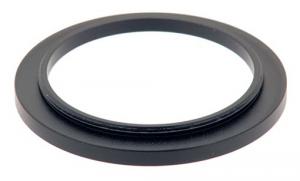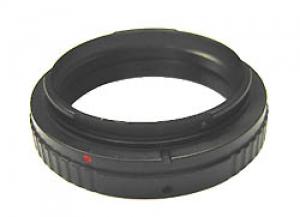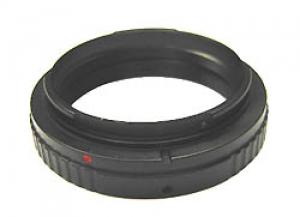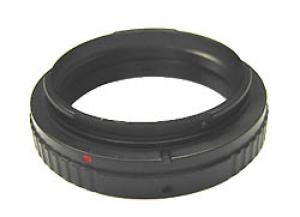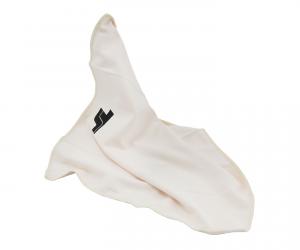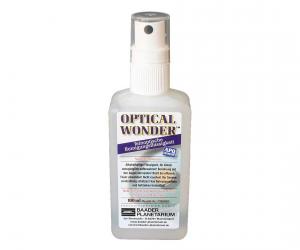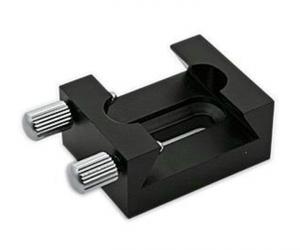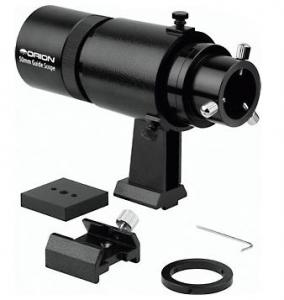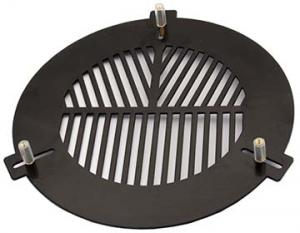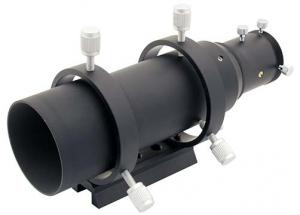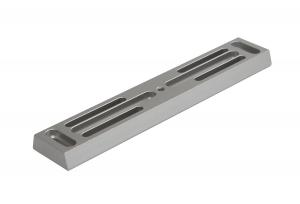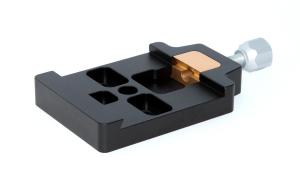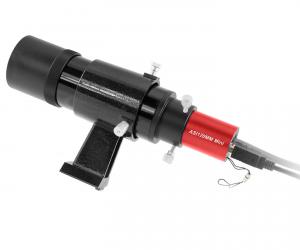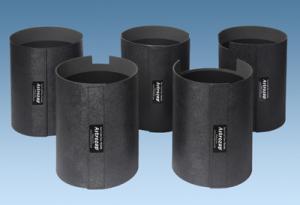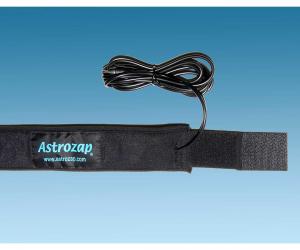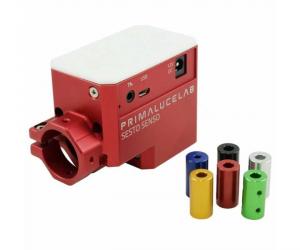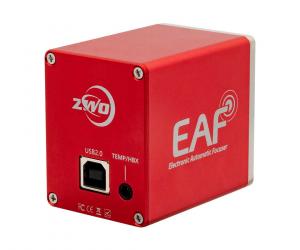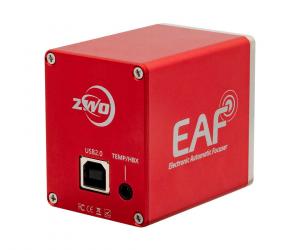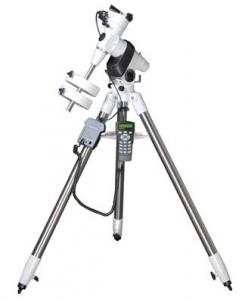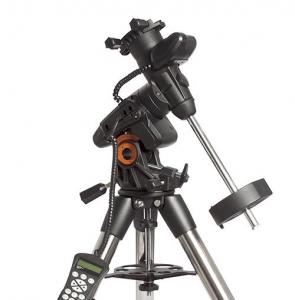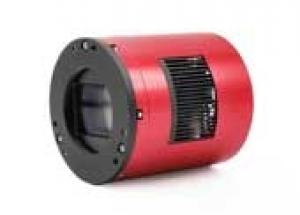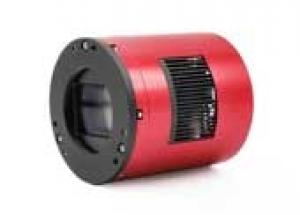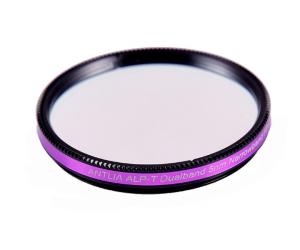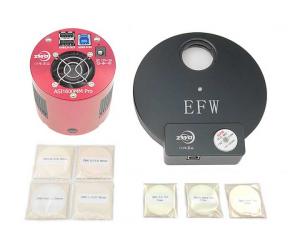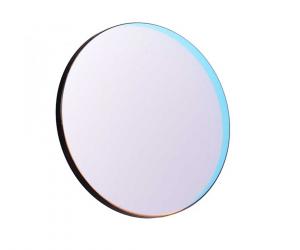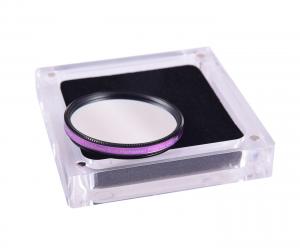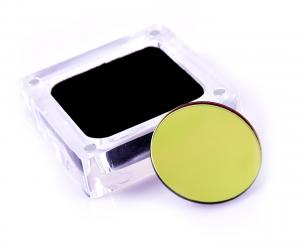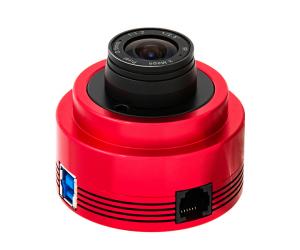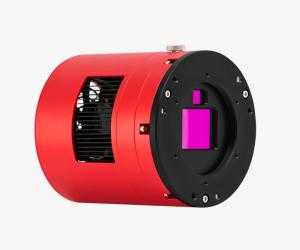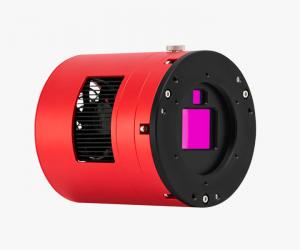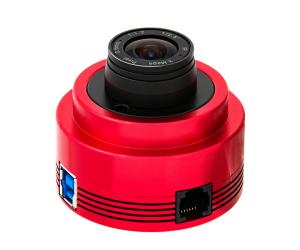- Telescopes
- Overview:
Telescopes - Achromatic Refractor
- Apochromatic Refractor
- Overview:
Apochromatic Refractor - ED Refractor - less color aberration than an achromatic
- SD APO - color free 2-element APO objective
- EDT APO - 3 element ED objective
- High End APO with 3-element APO objective - no color aberation
- Flatfield APO with flat field for Astrophotography
- All Apos and EDs from all manufacturers - large overview
- TS APO and ED from Japan with high quality optics
- Overview:
- Newtonian Telescopes
- Dobsonian Telescopes
- RC Ritchey Chretien Telescopes
- Casssegrain Telescopes
- Reflektor Telescopce with Lens Correcture
- Maksutov Cassegrain Telescopes
- GoTo Telescopes
- Solar Telescopes H-Alpha
- Overview:
- Mounts Tripods Rings Rails Power Supply ...
- Overview:
Mounts Tripods Rings Rails Power Supply ... - Mounts Equatorial with GoTo
- Mounts Equatorial without GoTo
- Mounts Azimutal with GoTo
- Mounts Azimutal without GoTo
- Mounts GoTo - Harmonic Drive
- Travel mounts for astro imaging
- Tripods Piers Polar Wedges
- Mount Control & Electronics
- Dovetail Clamps, Plates and Mount Adapters
- Tube Rings
- Power Supply
- Counterweights Balance Weights
- Mount Accessories - Other
- Overview:
- Telescope Accessories
- Overview:
Telescope Accessories - Eyepieces
- Barlows & Reducer Lenses
- Diagonal Mirrors and Prisms
- Binocular Viewers
- Finder Scopes
- Telescope Collimation and Test
- Cleaning Tools
- Transport and Storage
- Dust protection for Telescopes & Accessories
- Stray Light Protection
- Dewcaps and Heater
- Focusers, Adapters, Motorfocus
- Telescope DIY & Improvement
- Other telescope accessories
- Replacement Parts
- Overview:
- Filters
- Overview:
Filters - Color Filters and Color Filtersets
- Nebular Filters for Visual Observing
- Neutral-Density and Polfilter
- Photo Narrowband Nebular Filters
- Photo Broadband Filters
- Photo Planetary Filters
- Photo R-G-B and IR Cut Filters
- Photo - Filtersets
- Photometric Filters
- Clip Filter for DSLR Cameras
- Filter Wheels and Filterslider
- Solar Filters for white light
- Solarfilter for H-Alpha and Calcium
- Overview:
- Adaptors
- Overview:
Adaptors - Adapter 1,25" and 24,5mm
- Adapter 2"
- Adapter T2 - M42x0.75
- Adapter M48x0,75
- Adapter M54
- Adapter SC
- Adapter M63
- Adapter M68
- Adapter to other Threads
- Adapter Extensions
- Adapter camera bayonet
- Adapter Objective Filterthread
- Adapter Quick Changing , Rotation
- Adapter Eyepiece Projection
- Adapters Tilting
- Overview:
- Astrophotography and Photography
- Overview:
Astrophotography and Photography - Cooled Cameras
- Cameras without Cooling
- Deep-Sky Cameras uncooled
- Set-Offers Camera, Filter, Wheels
- Acessories for Cameras
- Travel mounts for astro imaging
- Imaging Correctors for Telescopes
- Autoguiding Cameras & Sets
- Everything for Guiding
- Focusing aids - Bahtinov mascs
- Flat Field foils and boxes
- Lenses for Cameras
- Piggyback Camera Holder
- Camera Bags, Photocases & more
- Digital Camera and Smartphone Adapter
- Other photo accessories
- Overview:
- Binoculars, Spotting Scopes, Microscopes, Range Finders
- Overview:
Binoculars, Spotting Scopes, Microscopes, Range Finders - Roof Prism Binoculars
- Binoculars with Porro prisms
- Binoculars from 100mm Aperture
- Binoculars with 1,25 inch eyepieces
- TSMX APO Binoculars
- Binoculars for Astronomy
- Binoculars Hiking Bird watching
- Monoculars - Opera Binoculars
- Accessories for Binoculars
- Spotting Scopes
- Range Finders
- Microscopy
- Bags for Phototripods & Binoculars
- Overview:
- Phototripods and Binomounts
- Books, Software
- Overview:
Books, Software - Books for Astronomy Beginners
- Star Charts and Planispheres
- Books about our Solar System
- Observing Tips for Amateurs
- Popular Astronomy Literature
- Teaching material
- Astrophotography books
- Telescopes, Observatories, Construction
- Calendars Yearbooks
- Software, Star Charts
- Books for Microscopers
- Books Nature and Animals
- Nature Photography TimeLapse
- Overview:
- Night Vision, Magnifiers, Weather, Domes & more
- Beginner Astronomy and Gift Ideas
- Second Hand & Special Offers
- New products
Manufacturer: Askar Sharpstar
Product number: Hypergraph130
EUR1990.00new
EUR 1.990,00
incl. 19 % VAT (DE)
The VAT indicated refers to that applicable in Germany. After logging in, the VAT amount is adjusted to the applicable VAT of the stored delivery country. Therefore, the final price may vary accordingly.
excl. 14.33 € shipping costs (DE)
more details to the shipping costs ...Please log in to calculate shipping costs to your country.
There are no reviews for this product
- Details..
- Technical data..
- In the box..
- Reviews..
- FAQ..
- Manufacturer infos..
- Safety informations..
Sharpstar Hyperboloid Astrograph with 130 mm Aperture and f/2.8
With the 1302.8HNT Hypergraph 130, Sharpstar has created a telescope for mobile astrophotography. With a tube length of less than 40 centimeters, the "small" Hypergraph even fits into airline luggage. On the sky, however, the performance is remarkable. The fast focal ratio of f/2.8 allows you to properly expose an object in just one night, or even focus on multiple objects.The 2-element corrector offers very good field correction with full illumination beyond APS-C format. With a flat, you can even use full-frame cameras.
The working distance of 55 mm from the M48 thread on the focuser allows easy use of all common astro cameras, DSLR and also mirrorless system cameras.
The advantages and features of the TS hypergraphs at a glance:
Astrophotographic results obtained with this telescope on Astrobin
Here you can find some astrophotographs made with this telescope model: Link to AstrobinSimple camera adaption via the screw thread of the focuser
With such a high resolution and fast optics, a screwed adaption of the camera is necessary. This prevents tilting and thus blurred stars at the edge.The 2.5" R&P focuser has a M48x0.75 male thread in addition to the M63x0.75 female thread. The working distance from this thread is exactly 55 mm. This corresponds, for example, exactly to the distance required by an SLR camera and the matching T-adapter. Astro cameras, such as those from ZWO, are also already supplied with an adapter kit to M48, which takes exactly this distance into account.
Practical tip from Teleskop-Service:
The Hypergraph convinces by its short design. For incident light, such as lanterns and similar stray light, it makes sense to use a flexible dew shield. A good dew shield not only reduces the risk of dew, it also prevents stray light from entering the tube. This also improves the contrast of the image.This is how we hand over the hypergraph to the star friend:
The hypergraphs must undergo a complete optimization and check at Teleskop-Service after transport. We have to invest several hours of time in each telescope, only in this way you will get an operational telescope. The individual steps are:Manuals
There is a PDF guide for collimation, you can download it here.In addition, the instructions for collimating the similar Hypergraph6 are available as a PDF.
Product video
There is a product video for this telescope from the manufacturer:There is a product video by Teleskop-Service for the hyperbolic astrographs in general:
| Design: | Hyperbolic flat-field astrograph with corrector |
| Aperture: | 130 mm |
| Focal length: | 364 mm |
| Focal ratio: | f/2.8 |
| Image circle: | 40 mm diameter at optimal correction |
| Camera mount: | M54x1 female thread / M48x0.75 male thread |
| Working distance: | 55 mm from M48x0.75 male thread |
| Eyepiece connection: | 1.25" via adapter |
| Tube material: | Aluminium |
| Tube length: | 394 mm |
| Tube diameter: | 174 mm (182 mm at tube end rings) |
| Weight: | 4.3 kg incl. tube rings, dovtail rail etc. |
Astrophotographic results obtained with this telescope on Astrobin
Here you can find some astrophotographs made with this telescope model: link to Astrobin and second link to Astrobin (only few images)Four customer photos
Our customer Andreas Tofahrn from near Frankfurt (Germany) has imaged several deep sky objects with this telescope: Object: Andromeda Galaxy (M 31)
Object: Andromeda Galaxy (M 31)Photographer: Andreas Tofahrn (Germany)
Telescope: TS-Optics Hypergraph 130 mm f/2.8 (Hypergraph130)
Filters: Antlia LRGB filter set 36 mm (LRGB-V36mm)
Imaging camera: ZWO ASI2600MM Pro (ASI2600MM-P)
Exposure: 3x10x120s RGB, 20x60s L
Mount: Skywatcher HEQ-5 Pro (HEQ5skyscan)
Software: PixInsight, BlurXTerminator
 Object: Veil Nebula Complex (NGC 6992 / NGC 6960 / NGC 6974)
Object: Veil Nebula Complex (NGC 6992 / NGC 6960 / NGC 6974)Photographer: Andreas Tofahrn (Germany)
Telescope: TS-Optics Hypergraph 130 mm f/2.8 (Hypergraph130)
Filters: none
Imaging camera: ZWO ASI2600 MC Pro (ASI2600MC-P)
Exposure time: 37 min
Mount: Astro-5 mount (probably similar to Bresser EXOS-2, Celestron AVX or Skywatcher EQ5)
Software: PixInsight, BlurXTerminator
 Object: Heart Nebula (IC 1805)
Object: Heart Nebula (IC 1805)Photographer: Andreas Tofahrn (Germany)
Telescope: TS-Optics Hypergraph 130 mm f/2.8 (Hypergraph130)
Filters: Antlia LRGB filter set 36 mm (LRGB-V36mm), ZWO 7 nm narrowband filter set 36 mm (ZWONBSET36)
Imaging camera: ZWO ASI2600 MC Pro (ASI2600MC-P)
Exposure times: H-alpha 18x 480 s (2.4 h), [O III] 19x 600 s (3.1 h), [S II] 19x 480 s (2.5 h), RGB 3x 22 min (1.1 h)
Mount: Skywatcher HEQ-5 Pro (HEQ5skyscan)
Software: AstroPixelProcessor, PixInsight, PhotoShop
 Objekt: Kaliforniennebel NGC-1499)
Objekt: Kaliforniennebel NGC-1499)Photographer: Andreas Tofahrn (Germany)
Telescope: TS-Optics Hypergraph 130 mm f/2.8 (Hypergraph130)
Filters: Antlia LRGB filter set 36 mm (LRGB-V36mm), ZWO 7 nm narrowband filter set 36 mm (ZWONBSET36)
Imaging camera: ZWO ASI2600 MC Pro (ASI2600MC-P)
Exposure times: H-alpha 26x 480 s (3.5 h), [O III] 38x 600 s (6.3 h), [S II] 37x 480 s (4.9 h), RGB 3x 1560 s (1.3 h)
Mount: Skywatcher HEQ-5 Pro (HEQ5skyscan)
Software: AstroPixelProcessor, PixInsight, PhotoShop
Many thanks to Andreas Tofahrn for the great photographs!
More customer photos
Our customer Joshua Carter from Wakayama (Japan, originally Arkansas in the USA) has also made great images with this telescope: Object: Boogeyman Nebula (LDN 1622)
Object: Boogeyman Nebula (LDN 1622)Photographer: Joshua Carter (Japan)
Observation site: Wakayama (Japan), Bortle 3
Telescope: Sharpstar Hypergraph 130 mm f/2.8 (Hypergraph130)
Filter: Astronomik L-2 (8H00PL)
Imaging camera: ZWO ASI294MC Pro (ASI294MCpro)
Exposure: 210x120? (7 h), Gain 120, -20 °C, plus darks, flats, dark flats
Off-Axis guider: ZWO OAG-L (ZWO-OAG-L)
Guiiding camera: ZWO ASI174 Mini (ASI174MINI)
Mount: iOptron GEM45 (IO7603A)
Controller: ASIair plus (ASIAIRPLUS)
Software: DeepSkyStacker, PixInsight, RC-Astro BXT/NXT/SXT, Photoshop
 Object: Reflexion nebula in Andromeda (LBN 534 and VdB 158)
Object: Reflexion nebula in Andromeda (LBN 534 and VdB 158)Photographer: Joshua Carter (Japan)
Observation site: Wakayama (Japan), Bortle 3
Telescope: Sharpstar Hypergraph 130 mm f/2.8 (Hypergraph130)
Filter: Astronomik L-2 (8H00PL)
Imaging camera: ZWO ASI294MC Pro (ASI294MCpro)
Off-Axis guider: ZWO OAG-L (ZWO-OAG-L)
Guiiding camera: ZWO ASI174 Mini (ASI174MINI)
Mount: iOptron GEM45 (IO7603A)
Controller: ASIair plus (ASIAIRPLUS)
Software: DeepSkyStacker, PixInsight, RC-Astro BXT/NXT/SXT, Photoshop
 Object: Cocoon Nebula (IC 5146 with SH2-125)
Object: Cocoon Nebula (IC 5146 with SH2-125)Photographer: Joshua Carter (Japan)
Observation site: Wakayama (Japan), Bortle 3
Telescope: Sharpstar Hypergraph 130 mm f/2.8 (Hypergraph130)
Filter: Astronomik L-2 (8H00PL)
Imaging camera: ZWO ASI294MC Pro (ASI294MCpro)
Off-Axis guider: ZWO OAG-L (ZWO-OAG-L)
Guiiding camera: ZWO ASI174 Mini (ASI174MINI)
Mount: iOptron GEM45 (IO7603A)
Controller: ASIair plus (ASIAIRPLUS)
Software: DeepSkyStacker, PixInsight, RC-Astro BXT/NXT/SXT, Photoshop
 Object: Pleiades (M45)
Object: Pleiades (M45)Photographer: Joshua Carter (Japan)
Observation site: Wakayama (Japan), Bortle 3
Telescope: Sharpstar Hypergraph 130 mm f/2.8 (Hypergraph130)
Filter: Astronomik L-2 (8H00PL)
Imaging camera: ZWO ASI294MC Pro (ASI294MCpro)
Off-Axis guider: ZWO OAG-L (ZWO-OAG-L)
Guiiding camera: ZWO ASI174 Mini (ASI174MINI)
Mount: iOptron GEM45 (IO7603A)
Controller: ASIair plus (ASIAIRPLUS)
Software: DeepSkyStacker, PixInsight, RC-Astro BXT/NXT/SXT, Photoshop
Many thanks to Joshua Carter for the great photographs!
Comet photos
Andreas Tofahrn from near Frankfurt (Germany) also imaged a beautiful comet with this telescope: Object: Comet C/2022 E3 (ZTF)
Object: Comet C/2022 E3 (ZTF)Photographer: Andreas Tofahrn (Germany)
Telescope: TS-Optics Hypergraph 130 mm f/2.8 (Hypergraph130)
Filters: Antlia LRGB filter set 36 mm (LRGB-V36mm)
Imaging camera: ZWO ASI2600 MC Pro (ASI2600MC-P)
Exposure: 217x 30 s RGB, ~1.8 h)
Mount: Skywatcher HEQ-5 Pro (HEQ5skyscan)
Software: AstroPixelProcessor, PixInsight, BlurXTerminator Tools, Photoshop RC-Astro Tools
 Object: Comet C/2022 E3 (ZTF) close to Mars
Object: Comet C/2022 E3 (ZTF) close to MarsPhotographer: Andreas Tofahrn (Germany)
Telescope: TS-Optics Hypergraph 130 mm f/2.8 (Hypergraph130)
Filters: Antlia LRGB filter set 36 mm (LRGB-V36mm)
Imaging camera: ZWO ASI2600 MC Pro (ASI2600MC-P)
Exposure: ~1.5 h
Mount: Skywatcher HEQ-5 Pro (HEQ5skyscan)
Software: AstroPixelProcessor, PixInsight, Photoshop
Many thanks to Andreas Tofahrn for these beautiful photographs!
Question:
How can I attach the ZWO EAF to the focuser?
Answer from Teleskop-Service:
The EAF is attached via the clamping screw which blocks the adjustment of the focuser. No additional adapter is necessary.
| Manufacturer / Importeur: | Teleskop-Service Ransburg GmbH |
| Street: | Von-Myra-Str. 8 |
| ZIP / City: | 85599 Parsdorf |
| Country: | Germany |
| Telefon number: | +49 89 99228750 |
| Email: | info@teleskop-service.de |
| Website: | www.teleskop-service.de |
Safety informations: PDF Download
Recommended accessories
Adaptors
Cleaning & Collimating
TS-Optics Optical Super Microfiber Cleaning Cloth
EUR 5,99RRP EUR 7,95you save 24.7% (EUR 1,96)
Customers who bought this product also bought...
TS-Optics 50 mm Guiding Scope and Finder Scope with 1.25" Receptacle
EUR 94,90RRP EUR 109,00you save 12.9% (EUR 14,10)
TS-Optics Bahtinov Mask for Astrophotography - D= 175 - 220 mm
EUR 26,90RRP EUR 33,00you save 18.5% (EUR 6,10)
TS-Optics Guiding Set 50 mm Mini Guide Scope and ASI120MM Mini guiding camera
EUR 299,00RRP EUR 339,00you save 11.8% (EUR 40,00)
General Accessories
Mounts
Celestron AVX GoTo Mount for Astronomy and Astrophotography
EUR 1.249,00RRP EUR 1.495,00you save 16.5% (EUR 246,00)
Photo Acessories
ZWO Color Astro Camera ASI 2600MC-PRO cooled, Sensor D= 28.3 mm
EUR 2.453,00RRP EUR 2.590,00you save 5.3% (EUR 137,00)
ZWO Kit ASI2600MM Pro - 7-Pos 36 mm Filter Wheel - 36 mm L-RGB & Narrowband Filter Set
EUR 4.514,00RRP EUR 4.752,00you save 5% (EUR 238,00)
Antlia ALP-T 36 mm Dual Band Narrow Band Nebula Filter - 5 nm
EUR 345,00RRP EUR 433,00you save 20.3% (EUR 88,00)
ZWO ASI678MC Color USB3.0 Astro Camera - Sensor D= 8.86 mm, 2.0 µm Pixel Size
EUR 423,00RRP EUR 479,00you save 11.7% (EUR 56,00)
ZWO ASI678MM monochrome USB3.0 Astro Camera - Sensor D= 8.86 mm, 2.0 µm Pixel Size
EUR 459,00RRP EUR 499,00you save 8% (EUR 40,00)
Similar Products
Reviews
Written by Christian Chwalczyk
on 2024-01-04
"Das Teleskop ist sehr wertig in der Verarbeitung. Es kam super verpackt. Das First Light steht noch aus. "




















